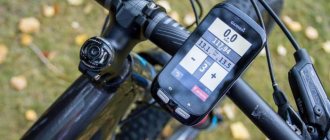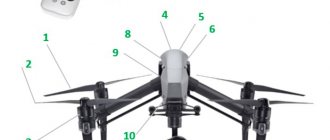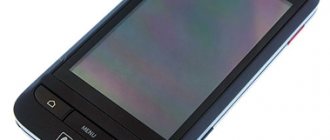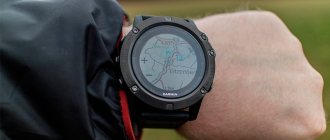Every modern smartphone combines many functions and has already successfully replaced a portable music player, video player, game console, pocket computer, photo/video camera, etc. Multifunctionality requires the smartphone to have high computing power and a large amount of memory, many auxiliary sensors and cameras with several lenses, including the presence of a front camera.
What is front camera
Front camera - what is it?
The front camera is a camera that looks like a small peephole that is located on the front of the phone, in the same place where the sensors are located (that is, at the top).
Previously, manufacturers did not pay enough attention to the characteristics of the front camera in a smartphone, since people hardly used it. The front camera was used exclusively for making video calls. True, it could barely cope with this task, since it had a resolution of only 0.3 MP.
However, over time, the front camera began to gain popularity, and manufacturers began to gradually improve its characteristics. Now you can take photos in good quality using the front camera.
Initially, the front camera was intended only for making video calls
Relatively recently, the camera began to be used to unlock the device.
Conclusion
The article describes in detail what a front camera is in a smartphone. Initially, the camera was intended only for video communication, but as the quality of the output material improved, the front lens began to be used more often for taking selfies. The front camera is also often used to unlock the screen, mainly by young people. While the video calling function is more in demand among entrepreneurs and employees of large companies.
Do you use a front camera? Share your use cases in the comments.
Front vs rear cameras: comparison
Typically, the front camera differs from the rear (rear) camera in the following parameters:
- lack of LED flash;
- low resolution, lower aperture;
- lack of autofocus.
Some phone models have a front LED flash and autofocus.
Which camera is better: front or rear? In most cases, of course, the rear camera is better than the front camera. But there are smartphones in which the front cameras take pictures no worse than the main ones.
How to choose a smartphone with a high-quality front camera
An LED flash (if equipped) will improve photo quality
When choosing, you need to pay attention not to the number of MP, but to:
- the size of one pixel (the size is indicated as follows: 1.0µm);
- aperture value;
- the presence of an LED flash - however, such phones are rare;
- the presence of an additional front camera module to obtain the bokeh effect;
- sensor model;
- The quality of the installed optical lens is normal optics, round and without any distortion.
Which aperture value is better: f/2.0 or f/2.2
First you need to understand the definition of the word “diaphragm”. Aperture (aperture, or aperture) is a hole that transmits light to the front camera, the area of which is changed by special petals. Aperture is indicated as follows: f/number (f/1.6, f/1.7, f/2.0). The higher the value, the smaller the throughput window, and the lower the value, the larger the throughput window.
So which value is better to choose: f/2.0 or f/2.2? Here you need to rely on the needs of the user. For example, to take daytime photos, you need an f/2.2 aperture, but for night shots, an f/2.0 aperture is better.
Main settings
The variety of selfie cameras is amazing, as manufacturers try to surprise consumers with the release of new phone models.
The characteristics of the rear camera include:
- Resolution is the number of horizontal and vertical pixels that make up a photograph or video. More pixels do not mean a more detailed image. The resolution can be physical - the number of pixels of the matrix - and software - it will increase due to the insertion of additional pixels during image processing.
- Sensor dimensions – determines the amount of light captured.
- Pixel size : large ones will collect more information in low light, small ones are susceptible to digital noise.
- Aperture is the hole through which light passes. Wider means more light will pass to the sensor.
- Focal length – determines the angular field and zoom of the camera.
“Front cameras” are made wide-angle with a view of ~ 100°, complemented by a flash.
How to take good portrait photographs
Here are 5 tips to help you take great selfies:
- Choose a good angle. When choosing an angle, take into account the features of your face and body.
- Set up the front camera, wipe the lens. Adjust focus, sharpness, brightness, contrast, color saturation and other parameters. Don't forget to remove dust and stains from the lens.
- Choose a background. Taking photos in front of a mirror is a bad idea, so choose the background for your photo carefully. For example, selfies with perspective, as well as extreme photographic portraits, look unusual;
- Take care of the lighting. For example, if you are taking a photo during the day, stand in front of a window.
- Emphasize your strengths and disguise your weaknesses. To do this, use cosmetics, Photoshop, but do not overdo it.
If the front camera has a low resolution, then use the rear camera.
Not at all. In fact, the front camera is the camera that is located on the front panel and allows you to take self-portraits (including selfies). Almost all smartphones are equipped with a front camera, but it is often difficult to notice it, since the peephole is small, for example:
Although some manufacturers make the camera eye deliberately noticeable, especially on so-called selfie phones:
The front camera is not only necessary for taking self-portraits, it is also used for video calls, which have become increasingly popular in recent years. And although some time ago manufacturers did not pay much attention to front cameras, now everything has changed - front cameras can easily compete with the main cameras in terms of shooting quality.
By the way, now even front cameras are using flash. Such models are not yet often found on sale, but everything can change.
As was written above, there are so-called selfie phones that allow you to take high-quality self-portraits. Such models include:
Sony Xperia C5 Ultra Dual
Or OPPO N3
Modern smartphones are available with a rear and front camera. Moreover, in some models the front module is not inferior in capabilities to the main one, and sometimes even surpasses it due to some parameters. From the article you will learn what explains this approach, as well as the purpose and capabilities of the front camera.
Huawei Mate 30 Pro
- Screen: 6.53 inches OLED
- Screen resolution: 1176 x 2400 pixels
- Chipset: HiSilicon Kirin 990 (7nm+)
- Processor: Octa-core (2 × 2.86 GHz Cortex-A76 and 2 × 2.09 GHz Cortex-A76 and 4 × 1.86 GHz Cortex-A55)
- GPU: Mali-G76 MP16
- Internal memory: 256 GB 8 GB RAM
- External Memory: NM (Nano Memory), up to 256 GB (shared SIM card slot)
- Main camera: Quad 40 MP + 8 MP + 40 MP + 3D TOF
- Front camera: dual 32 MP + 3D TOF
- Battery: Non-removable Li-Po 4500 mAh
The front camera of this mobile phone is capable of taking good selfies with a DxOMark score of 97 points, but the recording quality is a few points lower, so the overall score for the Huawei Mate 30 Pro selfie camera is 93.
DxOMark explains that the Mate 30 Pro's front-facing camera results have fairly wide dynamic range, accurate target exposure on faces and good detail in all conditions, good indoor and outdoor noise control, and good exposure and color in use.
Key features of the footage include accurate targeted exposure on faces and wide dynamic range, quick exposure adaptation in changing scenes, well-controlled noise in all conditions, and good skin tone rendition in most conditions.
Design features
Some models contain two modules with a separate lens, and in a year or two smartphones with three cameras will appear. In such modules, one lens is used by default, while an auxiliary one is activated under certain conditions, for example, the background blur effect or shooting with a wide angle. At the same time, in inexpensive Chinese smartphones the second camera often does not work. Usually a dummy or a module with interpolation is used - increased resolution by software. It is not difficult to identify such devices; just close the auxiliary lens. The system may report that the second camera is closed, but the final image quality will remain the same.
To expand the space on the front side, in some smartphones - Huawei P Smart Z, OnePlus 7 Pro, Vivo V15 Pro, the front camera is hidden in the body. When you turn on the camera, the module extends from the upper end of the housing and then returns back inside the housing. This solution is used only in expensive flagship models due to the high cost of execution.
Purpose and capabilities of the front camera
The appearance of the front camera in phones was facilitated by the development of video calls, as one of the advantages of the 3G network. Videotelephony has not received widespread use in the original idea to this day, due to certain difficulties. Therefore, before the release of instant messengers, the front camera was installed more as a bonus rather than a real necessity. Some users still used the front camera to record video messages and video diaries.
Messengers, combined with the rapid development of mobile operating systems - Android and iOS, have made it possible to widely use the front camera when making calls within programs. Therefore, mobile electronics manufacturers began to improve the characteristics of embedded modules. Increasing the resolution from typical 0.3 MP to 2 MP has improved the quality of photos and videos. For some modern smartphones, a 32-megapixel front camera resolution is not acceptable.
Improving the quality of front cameras has contributed to the development of “selfies” - the creation of a self-portrait. Smartphone owners have become more active in taking photographs using the front camera. Therefore, sometimes selfie-oriented smartphones appear on the market, where the resolution of the front camera is higher than that of the main module. One example of Vivo v9 with 24 and 16 MP cameras respectively. For shooting in the dark and in the evening, the front cameras are sometimes equipped with an LED flash.
To please selfie lovers, manufacturers are introducing optical and digital stabilization technologies into certain models. OIS and EIS technologies reduce shaking when filming on the move, which is useful for journalists and vloggers.
The front camera is also used to recognize the owner’s face and to quickly and conveniently unlock the screen. At the same time, implementation through a conventional camera is present in inexpensive and mid-price range models. Flagship models are equipped with a separate infrared module that can recognize the owner’s face in complete darkness.
How it all began
Finally realizing that people wanted to photograph themselves, manufacturers began looking for solutions. One of the first popular ideas was simple - if people took pictures of themselves in the mirror, why not give them the mirror? Next to the rear single camera, miniature mirrors began to be installed, which were sometimes even smaller than the lenses of the then 2-megapixel (at best) cameras. Of course, in practice, such a decision was unlikely to be much more than just marketing - people with good eyesight were able to see the maximum of their silhouette. Although now such a decision is mostly laughable, such an idea was definitely better than nothing.
The silvery circle to the right of the camera is the same mini-mirror. Few will notice the catch in this image.
But around the same time, there was another concept that seemed more reasonable: flip phones. Mobile phones of this format also had only one camera, but there was no need for a mirror, because many models used an additional mini-display (available when the smartphone was closed) - the image from the camera was transmitted to it.
If the camera is directly on the cover of the clamshell, the display will be better than any mini-mirror









